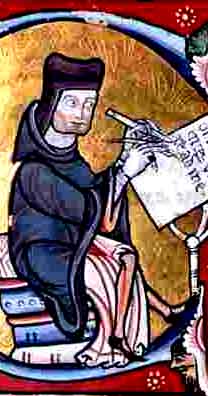“I don’t know what I think until I’ve written about it.” ~ Various Attributions
Of all the things I talk about here at your learning center, the one I always feel a little bit guilty about is notetaking. I always feel like the subject is like a benignly neglected child in a big family, the kid who basically raises herself in a household that is far too stretched and busy to worry about someone who is more or less okay. That’s notetaking.
Academic notetaking has been largely conscribed by one thing: the lecture. And historically, this makes sense. Back in the mists of time, professors would intone and, well, profess, and students would scratch away, trying to get down every word. It wasn’t uncommon for “serious” students to learn how to take shorthand in order to get down every word. This technique can be described as truly Mediaeval, with its roots planted firmly in the monastic scriptorium, where sacred text was read aloud while Brother Scribes took down copy. What a gig.
Academia has embraced a few technological advances since the Monastic era, most notably the slide deck. Ah, yes. PowerPoint. Our frenemy. No matter where you come down on the ubiquitous deployment of PowerPoint in the higher ed classroom, there is one undeniable plus: the mad rush to get down every word has been alleviated, at least somewhat. So long as the slides are made available, you don’t have to worry about copying out the entire slide during class. All you really have to worry about is what is said off slide.
But there is another part of notes that gets routinely neglected, and that is the notes you make to yourself, and if you don’t do that now, I’d encourage you to give it a go, especially if you are currently in the type of humanities or social science courses that require you to come up with your own paper topics. These notes capture what you think about the lecture topics or reading material. Think of these kinds of notes as the record of what you think.
And one more thing: these types of notes don’t have to be declarative. Solid questions arising from the reading material count as notes too.
Staff Writer: Pete Kimchuk, Senior Learning Instructor

